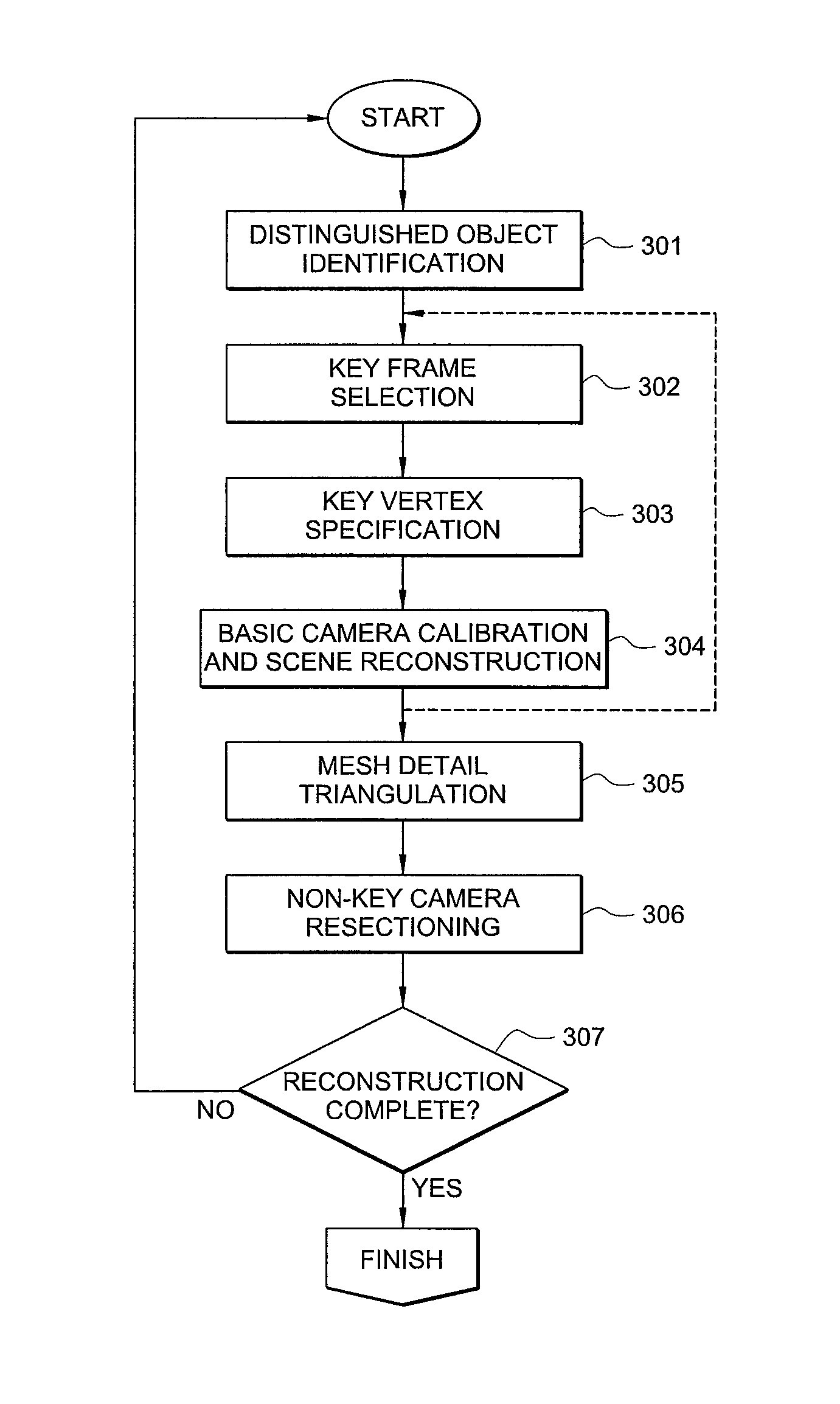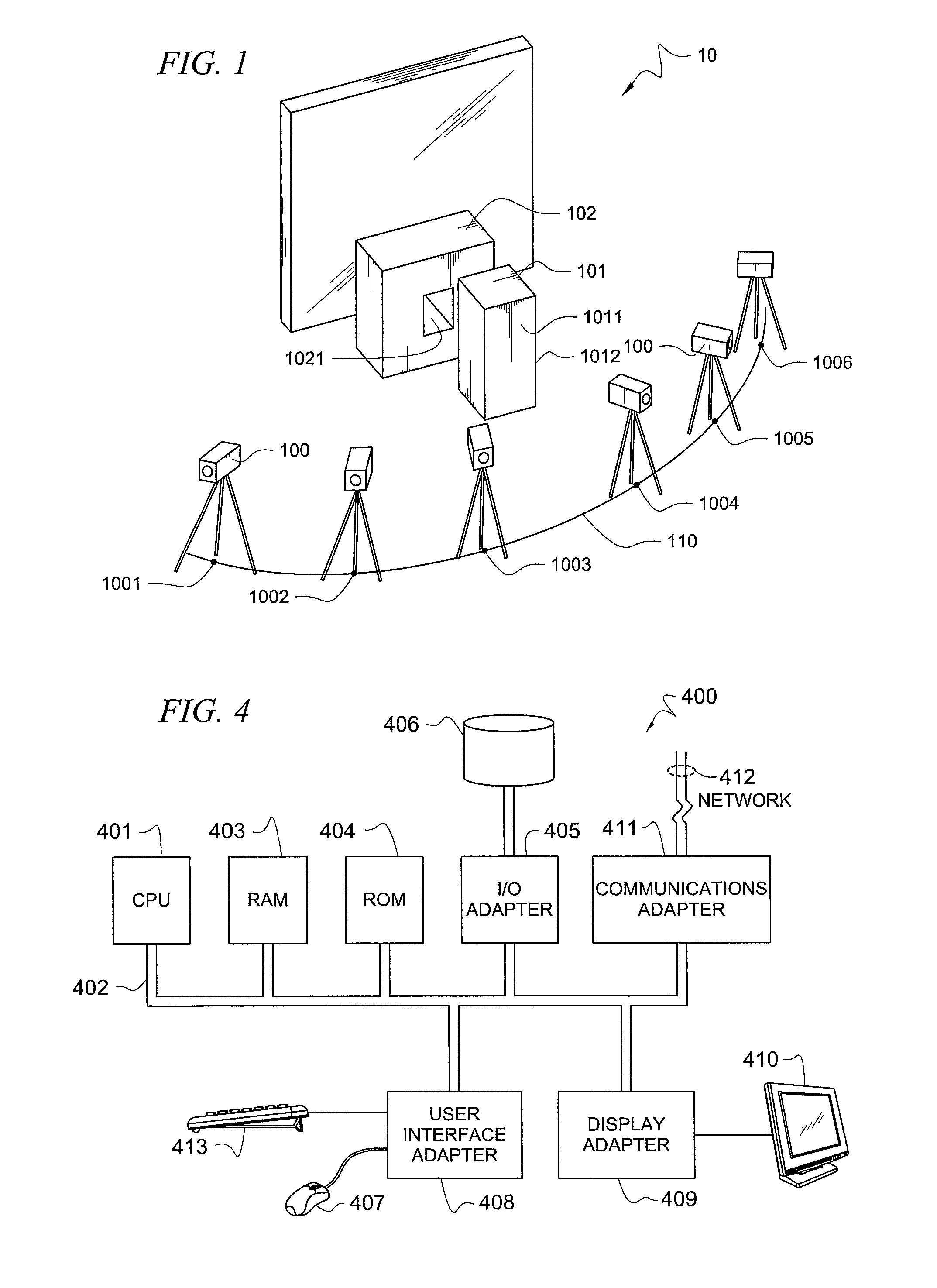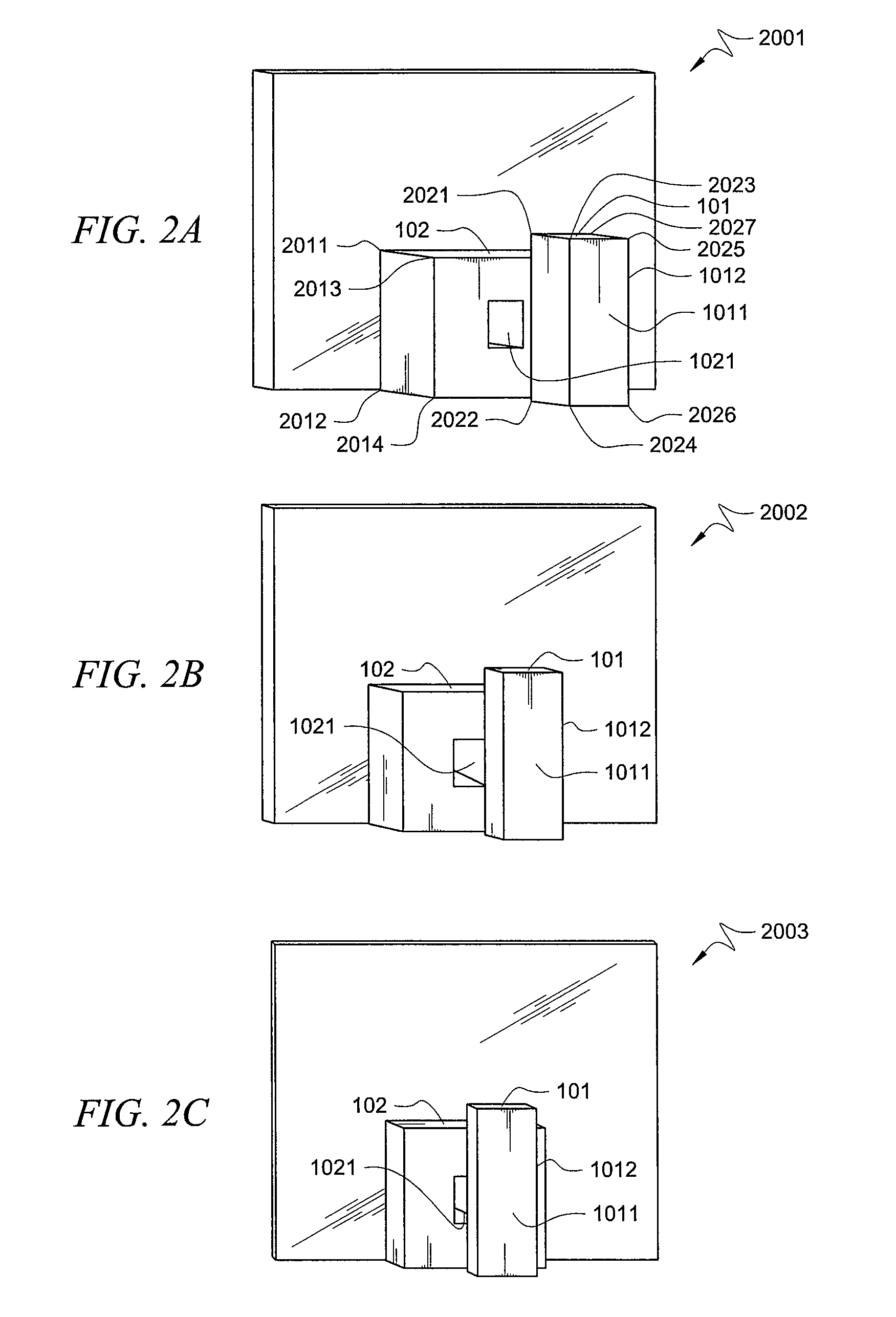Methodology for 3D scene reconstruction from 2D image sequences
a 2d image sequence and 3d scene technology, applied in image analysis, instruments, computing, etc., can solve the problems of fundamental problems still exist in the fact that the current camera calibration method is not known, and the relative differences between the 3d and 2d projections of features, so as to reduce the computational requirements
- Summary
- Abstract
- Description
- Claims
- Application Information
AI Technical Summary
Benefits of technology
Problems solved by technology
Method used
Image
Examples
Embodiment Construction
[0018]When starting with a sequence of 2D images captured by a moving camera or multiple cameras in different positions, 3D scene reconstruction typically involves combining camera calibration and object reconstruction which will generate the geometry for both the camera(s) and the objects in the scene. For example, if a camera has captured multiple images from different positions in a room, 3D geometry representing the motion of the camera and triangle meshes for features in the room, such as walls, furniture, and other objects will typically need to be determined.
[0019]FIG. 1 shows scene 10 with camera 100 at multiple positions 1001-1006 joined by collection curve 100. Scene 10 includes objects 101 and 102. Object 101 has features, such as flat surface 1011 and edge 1012, which may be represented as a plane and a line, respectively in a triangle mesh. Object 102 has feature 1021 which may be occluded by object 101 in 2D images captured by camera 100 at some of positions 1001-1006....
PUM
 Login to View More
Login to View More Abstract
Description
Claims
Application Information
 Login to View More
Login to View More - R&D
- Intellectual Property
- Life Sciences
- Materials
- Tech Scout
- Unparalleled Data Quality
- Higher Quality Content
- 60% Fewer Hallucinations
Browse by: Latest US Patents, China's latest patents, Technical Efficacy Thesaurus, Application Domain, Technology Topic, Popular Technical Reports.
© 2025 PatSnap. All rights reserved.Legal|Privacy policy|Modern Slavery Act Transparency Statement|Sitemap|About US| Contact US: help@patsnap.com



